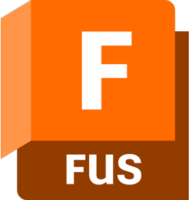Creating EDDs
2 days
In centre:
£please call
Live online:
£please call
Key details
FrameMaker training course teaching how to create FrameMaker Element Definition Documents (EDDs), to define the elements and attributes permitted in your structured FrameMaker documents.
You’ll learn how to:
- Build an Element Definition Document.
- Link elements using formatting rules to a FrameMaker template.
- Convert legacy data to a Structured FrameMaker file using a conversion table.
This course is ideal for anyone who needs to define the elements and attributes permitted in their structured FrameMaker documents.
Creating EDDs training is arranged on-request, i.e. one-to-one training or a ‘closed course’ for your group. Your training can be tailored to take into account any existing knowledge you have, and the work you’re going to be doing.
In-class or online
This course is available in-class at eight centres or live online.
Expert trainers
Courses are hosted by expert trainers from a technical authoring background with vast experience of using FrameMaker professionally. See Expert trainers.
How will I learn?
FrameMaker training is hands-on and practical.
Our trainers teach the necessary theory then demonstrate techniques step-by-step. You then practice the techniques taught on a computer running FrameMaker.
There is plenty of time to ask questions, and you can take away all the files you create.
Training guide and certificate
Course delegates receive:
- A comprehensive training guide for FrameMaker, to refer to throughout the course, and to use as a refresher afterwards.
- An e-certificate confirming successful course completion. Click here to see an example of the certificate you receive.
After course support
Following FrameMaker training, delegates are entitled to 30 days’ email support from their FrameMaker trainer to help with any post-course issues. For further details, see Support.
Prerequisites
Delegates should have a good working knowledge of FrameMaker used in both unstructured and structured modes, i.e. be familiar with the techniques taught in our Advanced FrameMaker and Authoring structured FrameMaker documents courses.
FrameMaker version
Training can be based on any version of FrameMaker to suit you.
General information
Course times
Standard course times are 9.30am–4.30pm.
As we’d be hosting this as a ‘closed course’ for you/your group, there’s usually flexibility to change these times to suit you, e.g. start or end 30 minutes earlier or later.
Payment
Payment for FrameMaker training can be made by:
- Bank transfer. Please call 01527 834783 for our bank details.
- Card. All major credit and debit cards accepted. Payment can be made securely online or over the phone. Card payments are processed by Stripe. Armada doesn’t record or store your card details.
Purchase orders
We accept purchase orders from UK-registered companies and public sector organisations.
Accommodation
See Accommodation local to our training centres.
Cancellations and postponements
If an on-request Creating EDDs course booking is cancelled giving less than 20 working days’ notice, a cancellation fee is payable. View cancellation terms.
If an on-request Creating EDDs course booking is postponed giving less than 20 working days’ notice, a postponement fee is payable. View postponement terms.
Terms and conditions
Expert trainers
Lynne Telfer

Lynne Telfer is highly experienced instructor with over 25 years’ experience working as a professional trainer.
In the late nineties, Lynne worked for Adobe as a trainer and consultant, hosting courses in FrameMaker and other applications at all levels for Adobe’s clients. She’s provided training in Adobe’s Technical Communication and Creative applications ever since.
Lynne has expert knowledge of:
- Adobe FrameMaker – both Unstructured and Structured use.
- Adobe RoboHelp.
- Adobe Creative Cloud applications: InDesign, Photoshop, Illustrator and Acrobat.
- Adobe’s e-Learning tools – Captivate and Presenter.
- Microsoft Office suite of applications, covering the mainstream applications Word, Excel and PowerPoint to advanced level.
Lynne has a BA Hons in Educational Practice from Oxford Brookes University.
Course content
Introduction
- What is an EDD?
- Understanding what an Element Definition Document (EDD) is and where it sits in the development cycle
Creating an EDD
- Experimenting with the different processes of generating an initial EDD.
Defining Container Elements
- Creating container elements and writing general rules
- Understanding the syntax of occurrence indicators, connectors and models
- Assigning comments to element definitions
- Setting the Element Type and defining an element as the Valid Highest Leve
Importing the EDD into a Template
- Testing the EDD as you create it by importing it into a template and testing the structure by creating a dummy document
Defining Table Elements
- Creating table elements and understanding the general rule restrictions for table and table part elements
Inclusions and Exclusions
- Defining elements as Inclusions and Exclusions
Auto insertions
- Setting elements to be automatically inserted as child and nested child elements
Object Formatting
- Setting an initial table format and initial row pattern on insertion of an element
- Defining initial object formats for cross reference, equation, graphic, marker and system variable elements
Attributes
- Creating an attribute list for elements
- Understanding the different types of attributes and setting special attribute controls
Text Format Rules
- Specifying the ElementPgfFormat Tag
- Writing all contexts rules and context rules specifically to name ancestors and siblings
- Writing a level rule and use context labels
- Specifying First/Last paragraph rules
- Setting Prefix and Suffix rules to extract attribute values
Book Building
- Defining an element for structuring books and elements for individual book components such as Table of Contents and Index.
- Generating a book file
Conversion Tables
- Structuring unstructured legacy data by creating and applying a conversion table
Export to HTML
- Using the HTML Reference Page to export a structured document to multiple HTML pages
- Including the HTML mapping set-up information in the EDD
Live online training
Online training lets you participate in a live FrameMaker course from your place of work or home.
We do everything possible to make your online training experience as close as possible to actually being in the classroom. You can:
- See and hear our trainer, and the other delegates participating in the course…

- Watch our trainer demonstrate techniques in FrameMaker.
- Interact by speaking, using chat, or raising your ‘virtual hand’ if you need assistance.
- Share your screen with our trainer, and allow them to take control to explain something.
Like our in-class courses, online Creating EDDs courses…
- Are presented by expert instructors.
- Give you plenty of opportunity to carry out assisted, practical exercises using FrameMaker.
- Offer 30 days’ email support from your trainer.
All you need is an Internet-connected computer with…
- FrameMaker installed.
- A webcam and audio capability. If your computer running FrameMaker doesn’t have these, you can use a second device, such as another computer or tablet. See Hardware recommendations for live online training for further details.
If there’s anything you’re not sure about we’ll do our best to help you. We won’t, however, be able to assist with your FrameMaker installation.
We provide everything else…
- Links to download the files, resources, etc. you’ll use in your course.
- A training guide. For most courses, you can choose from a printed copy that we post to you, or a PDF.
In the week before your course, we’ll send you an email containing everything you need to prepare for and participate in the training. Then, a couple of days before your course, we’ll give you a courtesy call to make sure you have everything in place and answer any questions you may have.
Please note that we are not able to record scheduled online courses for privacy reasons.
When you attend live online training, you’re participating in a real course, hosted by a real trainer, in real time















































